|
Wilbur Olin Atwater (1844-1907)
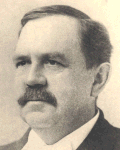 Atwater received his PhD from Yale in 1869 for studies on the
chemical composition of corn. Studying in Berlin and Leipzig, he became
familiar with the eminent German chemists and physiologists Voit, Rubner,
and Zuntz. As Professor of Chemistry at Wesleyan College in Connecticut,
USA, he studied the effects of fertilizers in farming and established
the first agricultural experimental station in the United States at
Wesleyan in 1875 (which in 1877 became part of the famous Sheffield
Scientific School at Yale University). From 1879 to 1882 Atwater determined
the chemical composition and nutritive values of fish and animal tissues.
Returning to Germany in 1882-83, Atwater studied the metabolism of mammals
in Voit's laboratory. Atwater received his PhD from Yale in 1869 for studies on the
chemical composition of corn. Studying in Berlin and Leipzig, he became
familiar with the eminent German chemists and physiologists Voit, Rubner,
and Zuntz. As Professor of Chemistry at Wesleyan College in Connecticut,
USA, he studied the effects of fertilizers in farming and established
the first agricultural experimental station in the United States at
Wesleyan in 1875 (which in 1877 became part of the famous Sheffield
Scientific School at Yale University). From 1879 to 1882 Atwater determined
the chemical composition and nutritive values of fish and animal tissues.
Returning to Germany in 1882-83, Atwater studied the metabolism of mammals
in Voit's laboratory.
| Cycle ergometer used by Atwater and his colleague
Benedict in their studies
on exercise metabolism.
|
| 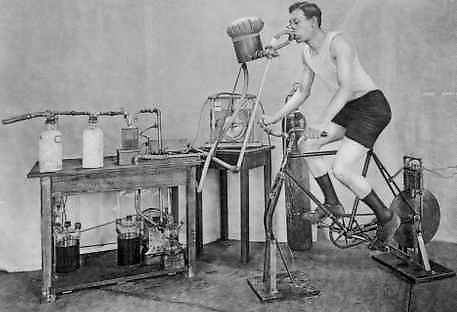
|
|
The sensitive balance scales Atwater used in his metabolic
studies.
|
| 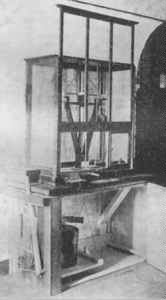
|
Atwater's familiarity with German techniques for measuring respiration
and metabolism helped him to conduct studies on food analysis, dietary
evaluations, energy requirements for work, digestibility of foods, and
economics of food production. He helped to persuade the United States
Government to fund studies of human nutrition. Atwater directed various
studies at agricultural experiment stations throughout the country that
resulted in the 1896 publication of 2600 chemical analyses of American
foodstuffs. An additional 4000 analyses were completed in 1899, including
another 1000 analyses done under Atwater's supervision. The 1906 re-issue
of the original report included the maximum, minimum, and average values
for water, protein, fat, total carbohydrates, ash, and a food's "fuel
value" calculated using Rubner's methods. Most commercial diet analysis
programs currently incorporate Atwater's databases of food composition
values.
Atwater compared US food evaluations with those from Europe. Although
Voit and other agricultural chemists advocated a minimum protein intake
of over 100 grams per day, Atwater felt this amount to be excessive.
He recommended controlled dietary studies to determine how nutrient
intake affected metabolism and muscular effort. After reviewing his
dietary studies, Atwater worried that the population consumed too much
food, particularly fats and sweets, and did not exercise enough:
It is a fair question whether the results of these things have induced
among us in a large class of well-to-do people, with little muscular activity,
a habit of excessive eating and may be responsible for great damage to
health, to say nothing of the purse (Maynard,1962, citing Atwater.) .
|
Inside the Atwater-Benedict human calorimeter.
|
| 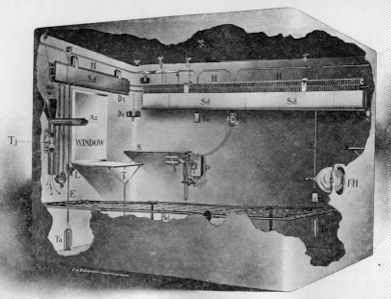
|
The metabolic studies Atwater began just before the turn of the century
contributed most to the emerging science of human nutrition and exercise.
Over a 12-year period he and E. B. Rosa (Professor of Physics at Wesleyan,
and later chief physicist of the National Bureau of Standards) perfected
the most accurate respiration calorimeter for studies of human metabolism.
Accounting for almost 100 percent of the heat produced and substrates
metabolized, this system allowed them to quantify the dynamics of energy
metabolism, directly measure the balance between food (energy) intake
and energy output, and evaluate the effects of diet and muscular activity
on metabolism. The classic papers of Atwater and Rosa (1899), Atwater
and Benedict (1905.), and Benedict and Carpenter (1910), with their
meticulous technical detail and experimental procedures, should be studied
by all who are interested in exercise nutrition.
|
Atwater's scientific lab.
|
| 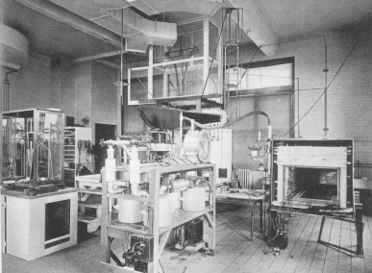
|
Before Atwater died in 1907, he had completed more than 500 energy-balance
experiments. Maynard (1962) believes that Atwater's most valuable contributions
concerned human energy balance. They confirmed that the law of conservation
of energy governed transformation of matter in both the human body and
inanimate world. Atwater's comments penned in 1895 sound contemporary:
Food may be defined as material which, when taken into the body,
serves to either form tissue or yield energy, or both. This definition
includes all the ordinary food materials, since they both build tissue
and yield energy. It includes sugar and starch, because they yield energy
and form fatty tissue. It includes alcohol, because the latter is burned
to yield energy, though it does not build tissue. It excludes creatin,
creatininin, and other so-called nitrogeneous extractives of meat, and
likewise thein or caffein of tea and coffee, because they neither build
tissue nor yield energy, although they may, at times, be useful aids to
nutrition (Atwater, 1905).
|
| For other history makers in exercise nutrition,
refer to McArdle, W.D., Katch, F.I., and Katch, V.L..
Sports and Exercise Nutrition. Williams and Wilkins. Baltimore,
1999. See preview (from mid-March). |

|
|
References
Atwater, W. O. (1895). Methods and Results of Investigations on the
Chemistry and Economy of Food. Bulletin 21, U.S. Department of Agriculture,
Office of Experiment Stations, Government Printing Office, Washington,
D.C.
Atwater, W. O., and Rosa, E. B. (1899). Description of a New Respiration
Calorimeter and Experiments on the Conservation of Energy in the Human
Body, Bulletin 63, U.S. Department of Agriculture, Office of Experiment
Stations, Government Printing Office, Washington, D.C.
Atwater, W. O., and Benedict, F. G. (1905). A Respiration Calorimeter
with Appliances for the Direct Determination of Oxygen, Carnegie Institute
of Washington, Washington, D.C.
Benedict, F. G., and Carpenter, T. M. (1910). Respiration Calorimeters
for Studying the Respiratory Exchange and Energy Transformations of
Man, Bulletin 123, U.S. Department of Agriculture, Office of Experiment
Stations, Government Printing Office, Washington, D.C.
Maynard, L. A. (1962). Wilbur O. Atwater-a biographical sketch. Journal
of Nutrition, 78, 3.
©1999
Edited and webmastered by Will Hopkins · Last updated 22 Feb 1999 |

 Atwater received his PhD from Yale in 1869 for studies on the
chemical composition of corn. Studying in Berlin and Leipzig, he became
familiar with the eminent German chemists and physiologists Voit, Rubner,
and Zuntz. As Professor of Chemistry at Wesleyan College in Connecticut,
USA, he studied the effects of fertilizers in farming and established
the first agricultural experimental station in the United States at
Wesleyan in 1875 (which in 1877 became part of the famous Sheffield
Scientific School at Yale University). From 1879 to 1882 Atwater determined
the chemical composition and nutritive values of fish and animal tissues.
Returning to Germany in 1882-83, Atwater studied the metabolism of mammals
in Voit's laboratory.
Atwater received his PhD from Yale in 1869 for studies on the
chemical composition of corn. Studying in Berlin and Leipzig, he became
familiar with the eminent German chemists and physiologists Voit, Rubner,
and Zuntz. As Professor of Chemistry at Wesleyan College in Connecticut,
USA, he studied the effects of fertilizers in farming and established
the first agricultural experimental station in the United States at
Wesleyan in 1875 (which in 1877 became part of the famous Sheffield
Scientific School at Yale University). From 1879 to 1882 Atwater determined
the chemical composition and nutritive values of fish and animal tissues.
Returning to Germany in 1882-83, Atwater studied the metabolism of mammals
in Voit's laboratory.



